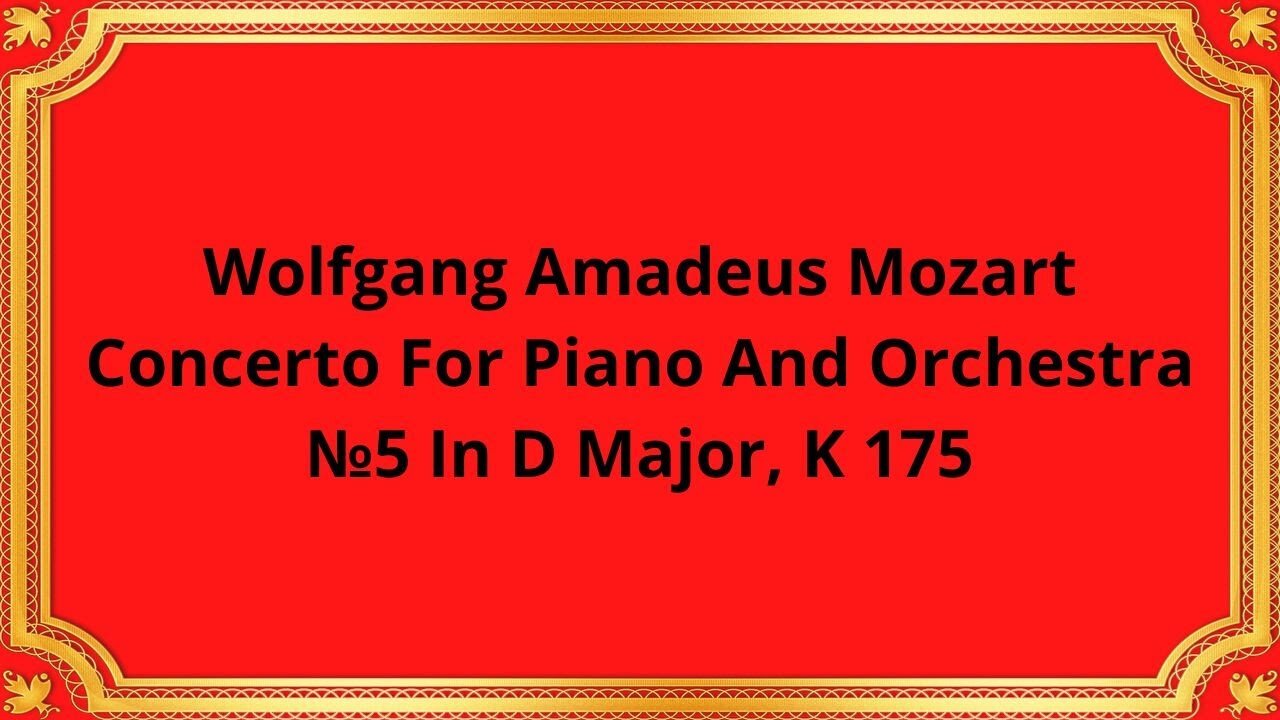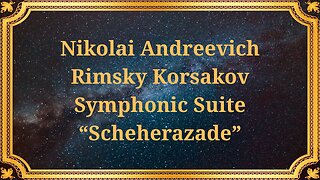Premium Only Content

Wolfgang Amadeus Mozart Concerto For Piano And Orchestra №5 In D Major, K 175
#Mozart #classicalmusic #pianoconcerto #musicalcomposition #Dmajor #K175 #WolfgangAmadeusMozart #orchestra
Publication date 1966
Salzburg Mozarteum Orchestra
Bernhard Paumgartner, Conductor
Wolfgang Amadeus Mozart, one of the greatest composers in musical history, left an indelible mark on the world of classical music with his remarkable compositions. Among his notable works, Concerto for Piano and Orchestra No. 5 in D Major, K 175, stands as a testament to his prodigious talent and innovative musical style.
Composed in 1773, during Mozart's early years, Concerto No. 5 in D Major, K 175, showcases his precocious talent as a composer and pianist. At the age of 17, Mozart was already making significant strides in the world of music, and this concerto demonstrates his mastery of the classical concerto form.
The concerto follows the traditional three-movement structure commonly found in classical concertos of the time. It begins with an Allegro movement, followed by a tender Andante, and concludes with a lively Allegro. Mozart's choice of D major as the key for this concerto adds a sense of brightness and exuberance to the overall composition.
The concerto is scored for solo piano and a small orchestra, typically consisting of strings, woodwinds, and horns. Mozart's orchestration allows for a delicate balance between the soloist and the accompanying ensemble, creating a harmonious and engaging musical dialogue.
Mozart's gift for crafting captivating and expressive piano melodies is evident throughout this concerto. The solo piano part not only showcases technical brilliance but also provides opportunities for the performer to convey a wide range of emotions, from lyrical and introspective passages to virtuosic flourishes.
Each movement of the concerto presents distinct musical characteristics. The opening Allegro is lively and energetic, featuring dazzling piano runs and spirited orchestral accompaniment. The Andante offers a contrasting mood, with its lyrical and tender melodies, while the final Allegro brings a sense of joy and exuberance through its spirited and playful themes.
Concerto No. 5 in D Major reflects Mozart's youthful exuberance and creativity. The composition displays a sense of exploration and experimentation, showcasing Mozart's ability to push the boundaries of musical conventions even at a young age.
While Concerto No. 5 in D Major may not be as widely recognized as some of Mozart's later works, it remains a testament to his prodigious talent and early contributions to the world of classical music. Its melodic beauty, technical brilliance, and youthful spirit have made it a beloved piece among pianists and classical music enthusiasts.
Conclusion:
Wolfgang Amadeus Mozart's Concerto for Piano and Orchestra No. 5 in D Major, K 175, stands as a testament to his exceptional talent and creative genius. Through its expressive piano writing, contrasting movements, and youthful spirit, this concerto captures the essence of Mozart's musical style during his early years. By exploring its historical context, structure, and notable characteristics, we gain a deeper appreciation for the brilliance and lasting impact of Mozart's musical legacy.
You have the opportunity to support the channel:
https://destream.net/live/RadSiarAl/donate
https://www.buymeacoffee.com/6355radsiaral
-
 41:38
41:38
Classical music_Music Inspiration
1 month agoNikolai Andreevich Rimsky Korsakov Symphonic Suite “Scheherazade”
1701 -
 1:34
1:34
robbijan
23 minutes agoRobbi On The Record
5 -
 UPCOMING
UPCOMING
Kimberly Guilfoyle
4 hours agoLive Coverage: Zelensky Goes to Washington, Plus Daily Signal's Tony Kinnett | Ep247
1.2K1 -
 LIVE
LIVE
Film Threat
20 hours agoVERSUS: ALIEN: EARTH! AND AUGUST CRAP! | Film Threat Versus
118 watching -
![[Ep 730] War or Peace: Will Zelenskyy Behave? | Dems & Media Mired in Hate](https://1a-1791.com/video/fww1/75/s8/1/a/0/r/a/a0raz.0kob-small-Ep-730-War-or-Peace-Will-Ze.jpg) LIVE
LIVE
The Nunn Report - w/ Dan Nunn
1 hour ago[Ep 730] War or Peace: Will Zelenskyy Behave? | Dems & Media Mired in Hate
148 watching -
 LIVE
LIVE
StoneMountain64
3 hours agoBattlefield 6 Roundup, and NEW MAP for Battlefield 2042 on the Road to BF6
171 watching -
 LIVE
LIVE
Jeff Ahern
1 hour agoMonday Madness with Jeff Ahern
128 watching -
 5:13
5:13
Members Club
5 hours agoProposal Fails You Won’t Believe 💍😂
3.78K6 -
 LIVE
LIVE
SportsPicks
3 hours agoCrick's Corner: Episode 66
50 watching -
 29:09
29:09
The White House
4 hours agoPresident Trump Participates in a Bilateral Meeting with the President of Ukraine
23.5K54